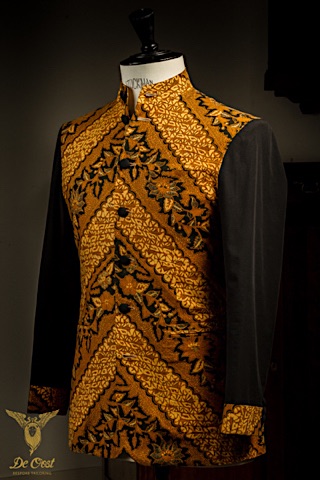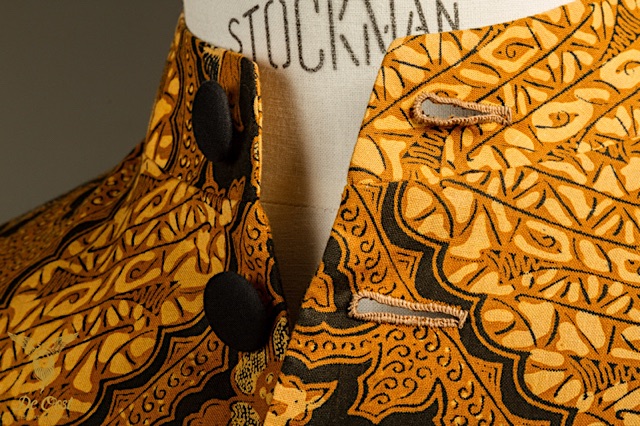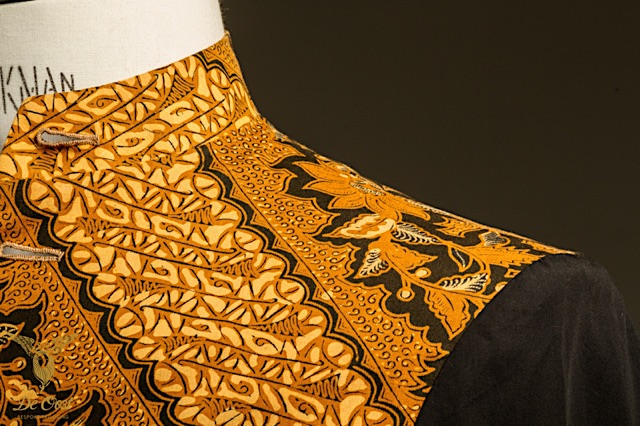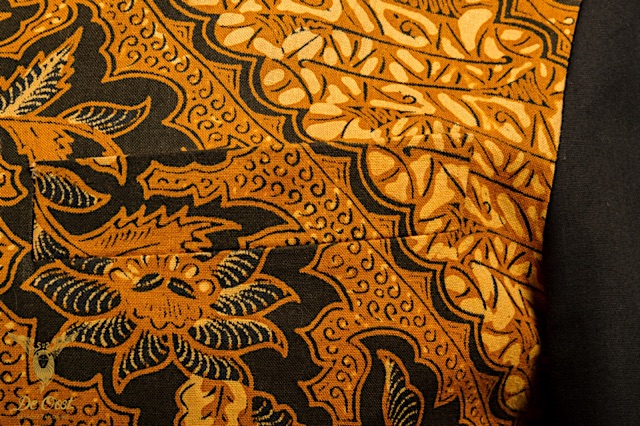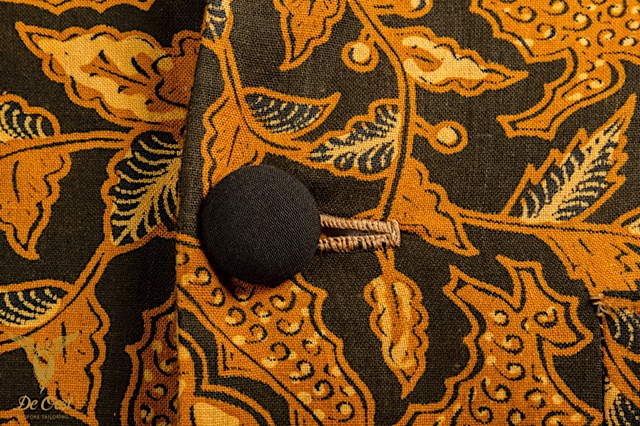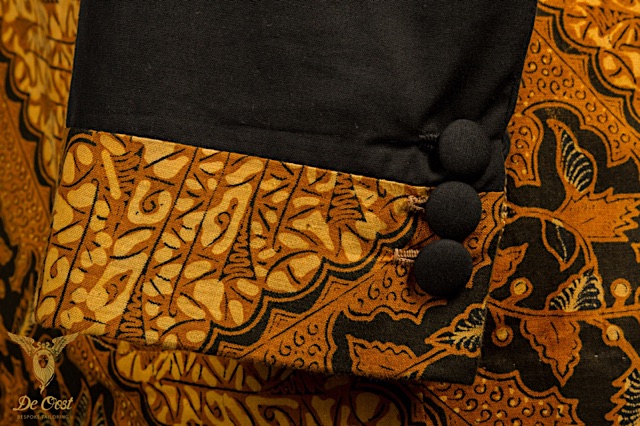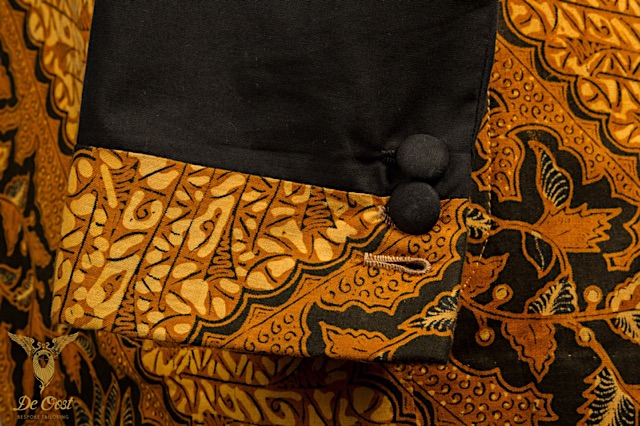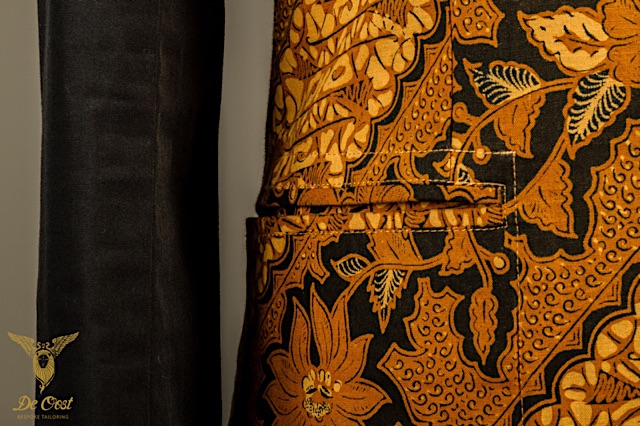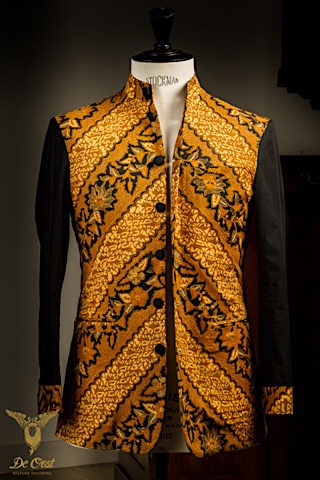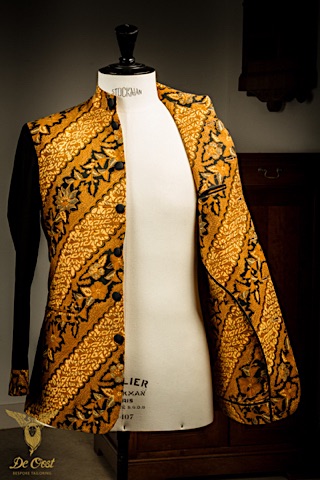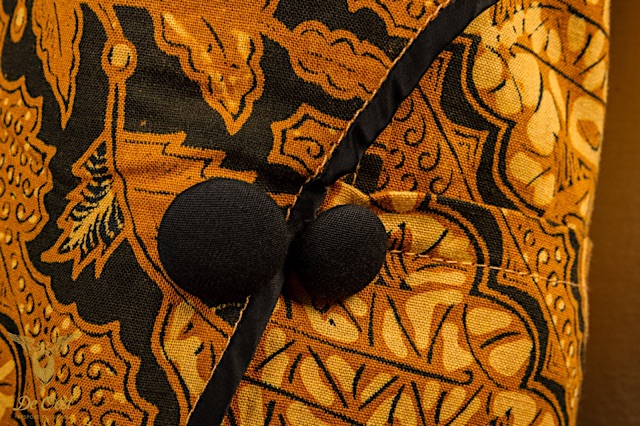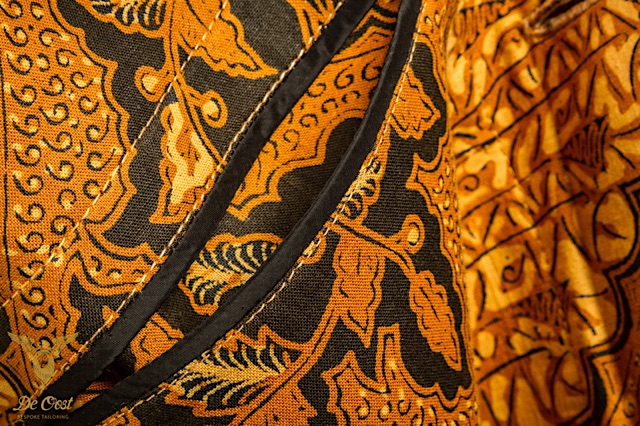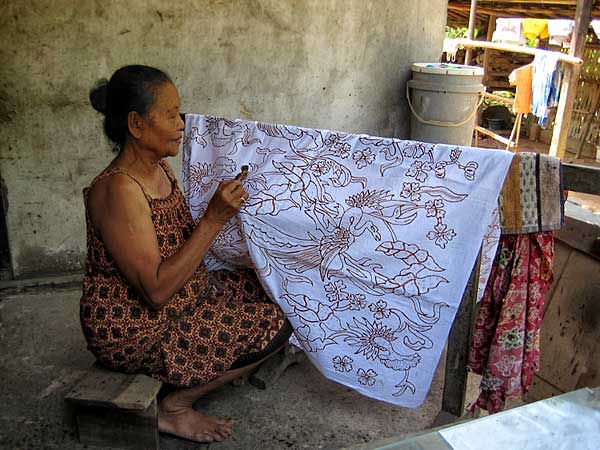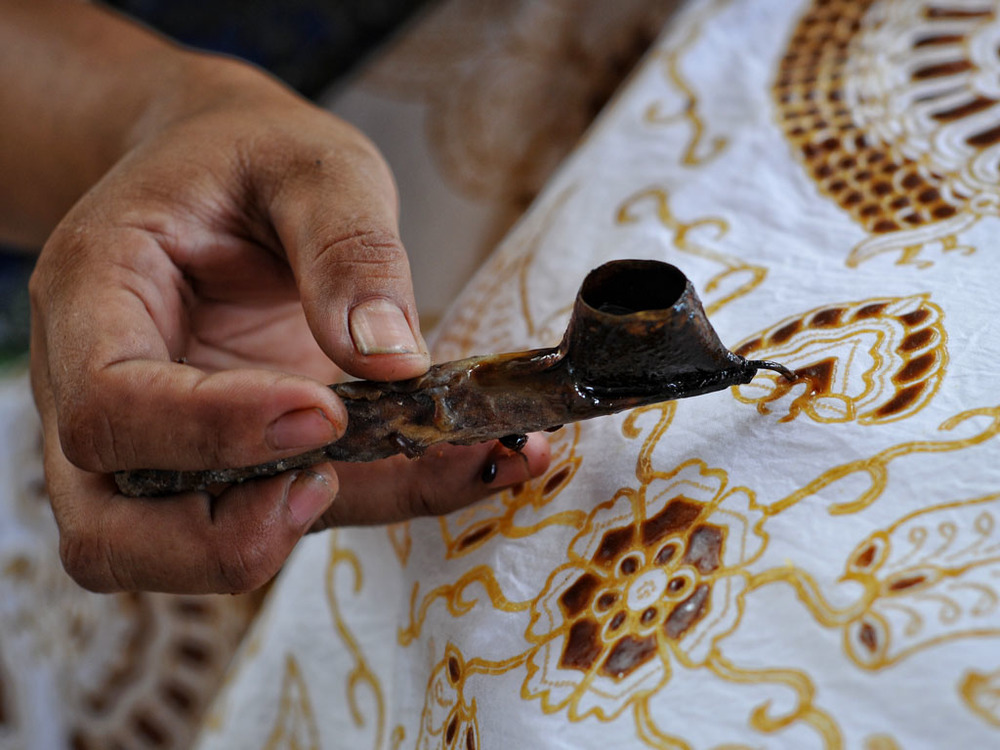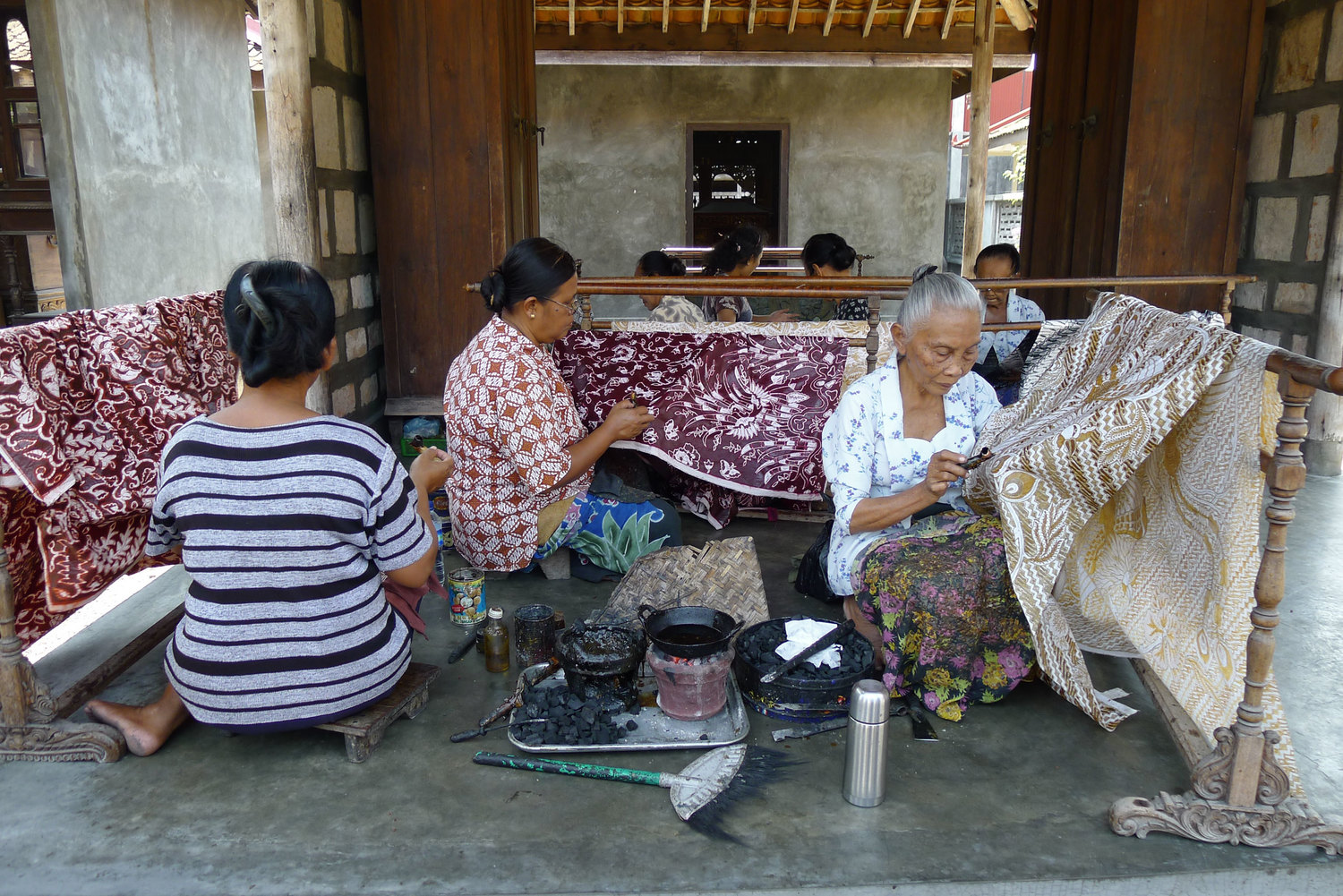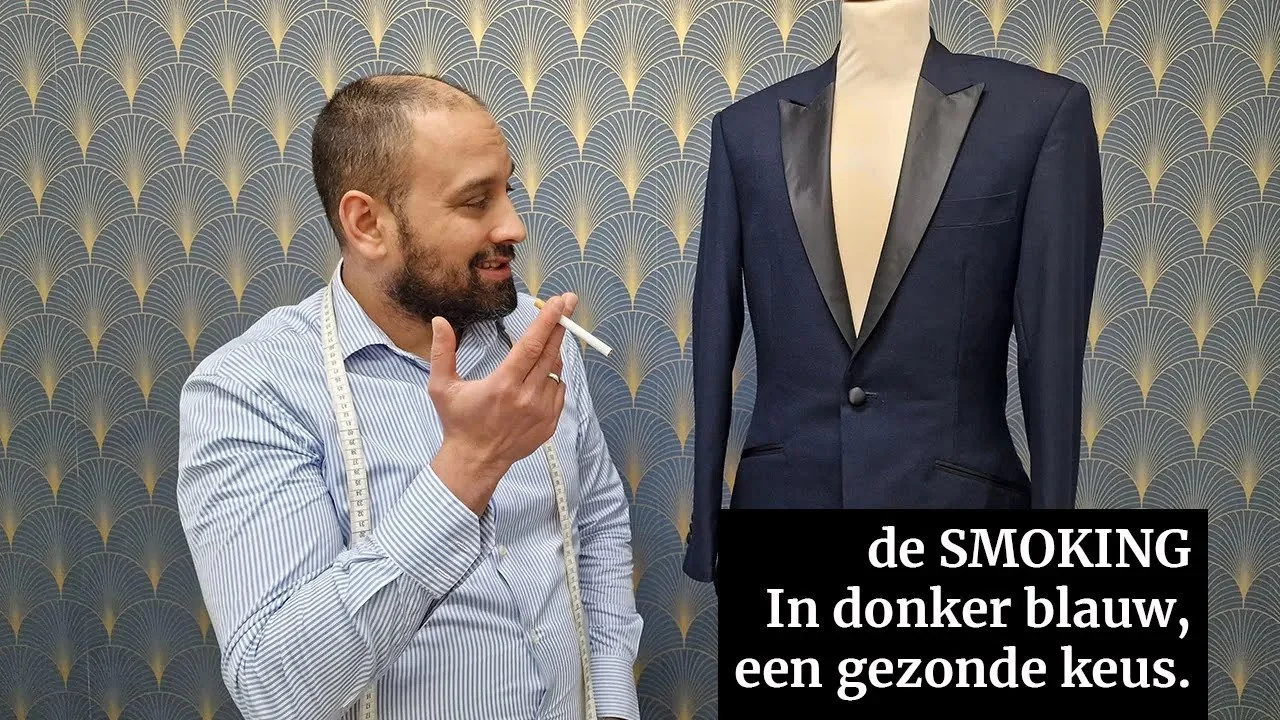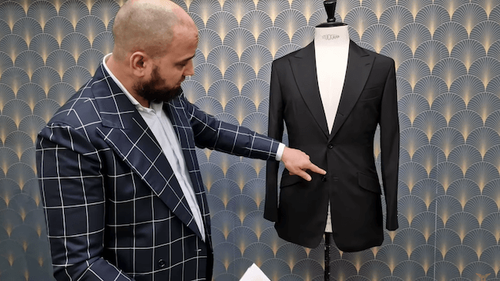A client came to visit us to say he was still extremely happy with the jacket we made for him in 2012. Back in 2012 he was imagining how it would look if we would create a suit out of two same color and pattern sarongs. A sarong or "sarung" denotes the lower garment worn typically by the Indonesian. He wanted to have a tailored suit through which he could express his interest in his Javanese roots. It has been a while since we have seen the jacket and the fit is still perfect. So we decided to take some pictures of it. Although he wore the jacket at parties where he would dance intensively, the jacket is still in good shape after more than three years.
The torso part of the jacket and cuffs are made out of one complete sarong. The golden-brown and black floral pattern is typical for fabric from Solo, Central Java. This piece is a modern commercial cloth and has a soft texture which makes the jacket comfortable to wear.
Unlined batik jacket tailored with Napolitano sartorial techniques, with Nehru collar. Torso fabric is cotton batik from Solo, Central Java Indonesia, sleeves are black cotton. One complete sarong is used to make the jacket. Seven buttons and three buttons on the sleeves with working button holes.
Technique
The original batik cloth has more of stiff waxy texture. Batik is a technique of wax resist dyeing applied to whole cloth, or cloth made using this technique. Batik is made either by drawing dots and lines of the resist with a spouted tool called a canting, or by printing the resist with a copper stamp called a cap. The applied wax resists dyes and therefore allows the artisan to colour selectively by soaking the cloth in one colour, removing the wax with boiling water, and repeating if multiple colours are desired. Originally all the materials used were locally available to the Indonesians, cotton, beeswax and vegetable dye for the coloring. Experts say that despite the fact that batik techniques for cloth alteration were already done by the early Egyptians, the technique was most developed in Indonesia.
The process of making batik in Central Java, using canting and cap.
History
Originally all the materials used were locally available to the Indonesians, cotton, beeswax and vegetable dye for the coloring. Experts say that despite the fact that batik techniques for cloth alteration were allready done by the early Egyptians, the technique was most developed in Indonesia. A tradition of making batik is found in various countries, including Indonesia, Malaysia, Singapore, India, Sri Lanka, Philippines and Nigeria; the batik of Indonesia, however, is the best-known. Indonesian batik made in the island of Java has a long history of acculturation, with diverse patterns influenced by a variety of cultures, and is the most developed in terms of pattern, technique, and the quality of workmanship.
Because of the Dutch colonial ventures in 'De Oost' (The Dutch East Indies) eventually made the Indonesian style fabric travel from South-East Asia to Africa and even South-America. In Suriname, the Javanese contract-laborers brought their clothing and culture and in the Dutch-Surinamese colonial melting pot it became to be worn even by Surinamese Creole people in religious ceremonies. Where the saying goes that the spirits love the Jampanesi krosi (Javanese patterns). In the 19th century the Royal Dutch East Indies Army (K.N.I.L.) hired mercenaries from Ghana to fight a war on the Indonesian island of Sumatra. After finishing their duties as mercenary, the Ghanaian soldiers settled in Java. Some becoming plantation owners and gained local wives. Most of them eventually returned to Ghana. Until this day there is a neighbourhood in the capital Accra which is called Java Hill. It has been said you can still find the Javanese batik acculturated to the wishes of the West-African customer.
Serdadu Afrika di Hindia Belanda (African Soldier in the Dutch East Indies) on the left with his local Indonesian wife and child, Ghanaian batik, a fashion show with Ghanaian Batik and the welcome sign of the Java Museum near Fort Elmina on the Ghanaian coast.
Do you also want to combine different worldly styles in fabrics, fits and patterns in your unique bespoke tailored clothing? Please visit De Oost and bring your favorite African or Asian fabric and we will make your piece clothing fit the need of what you want to feel and express with it.

